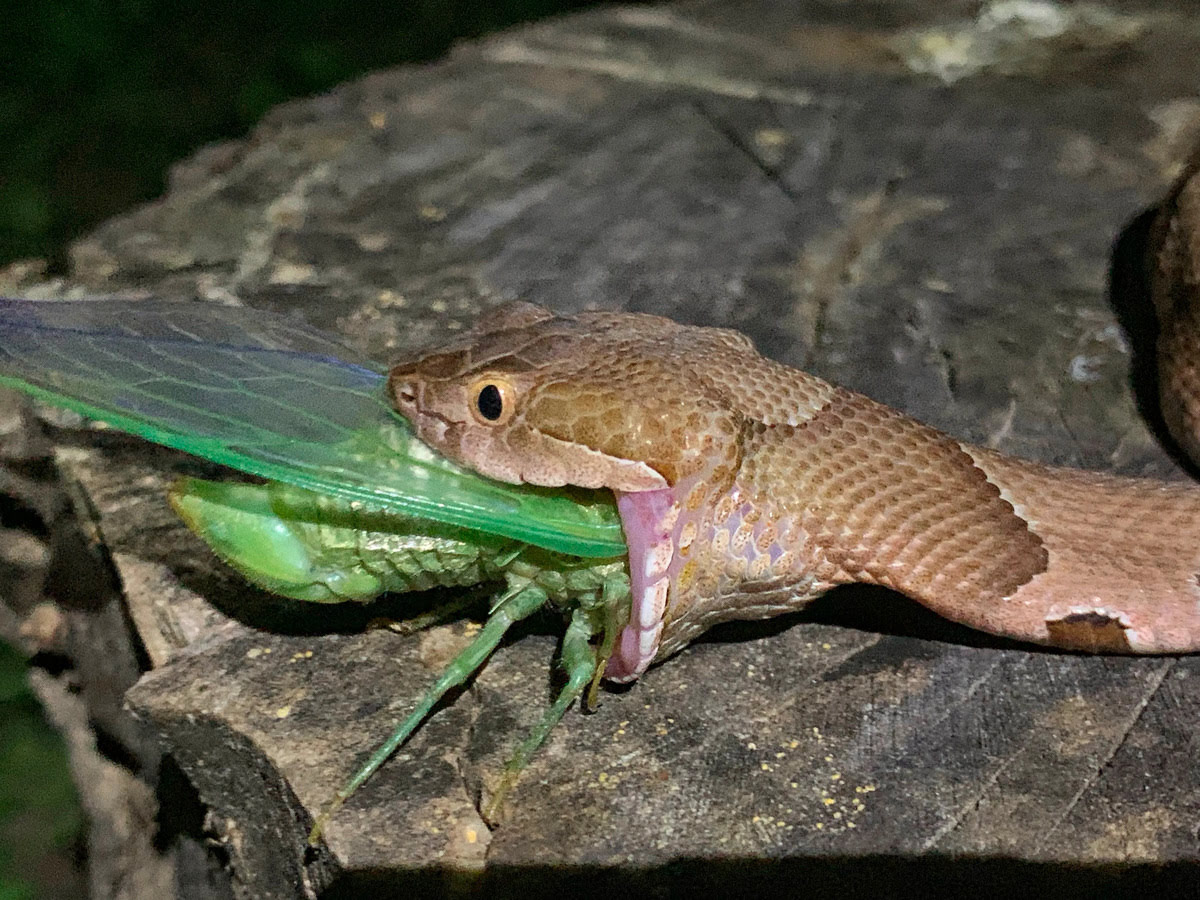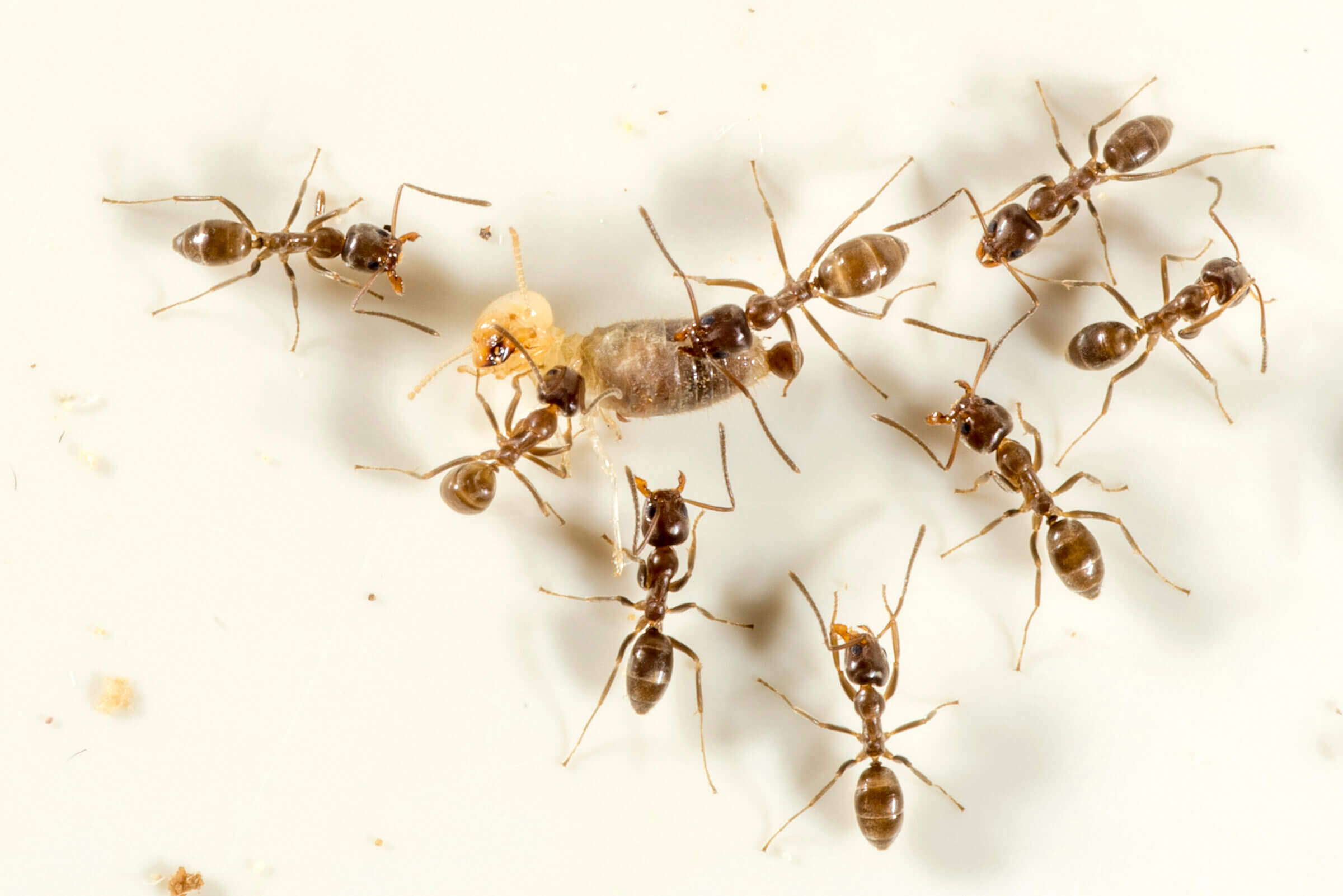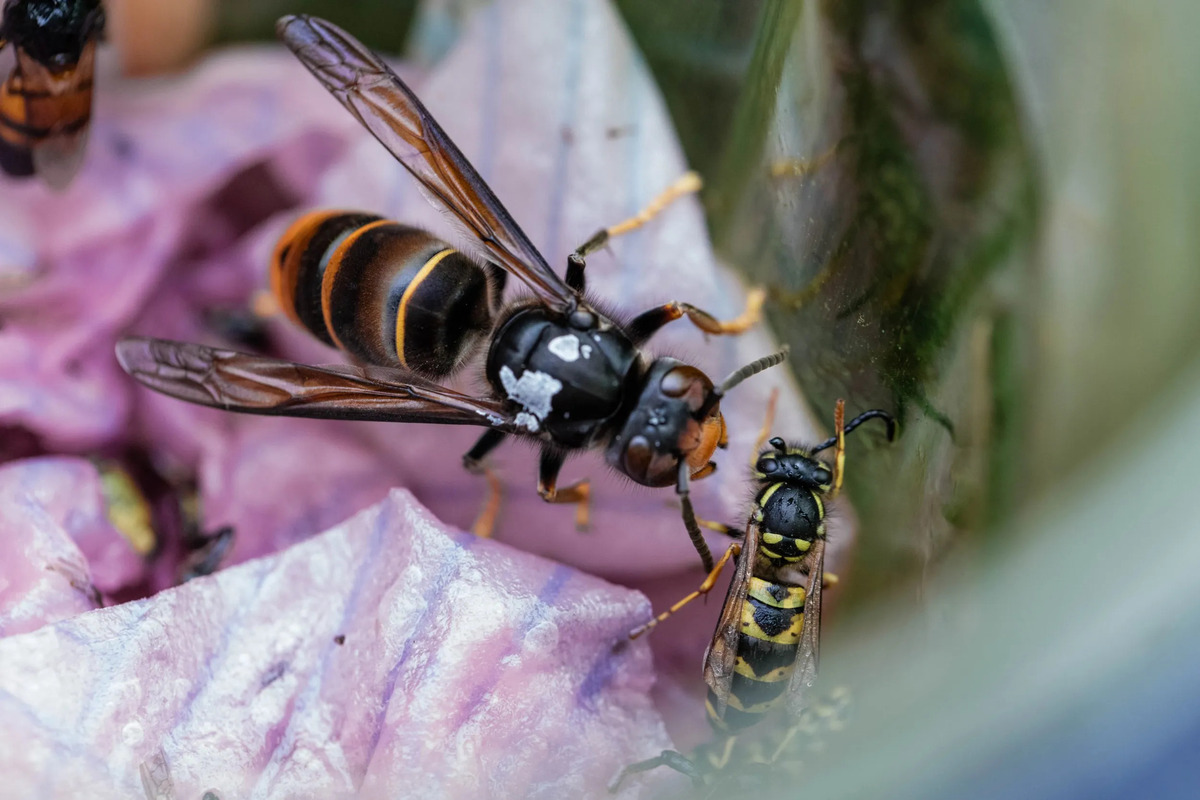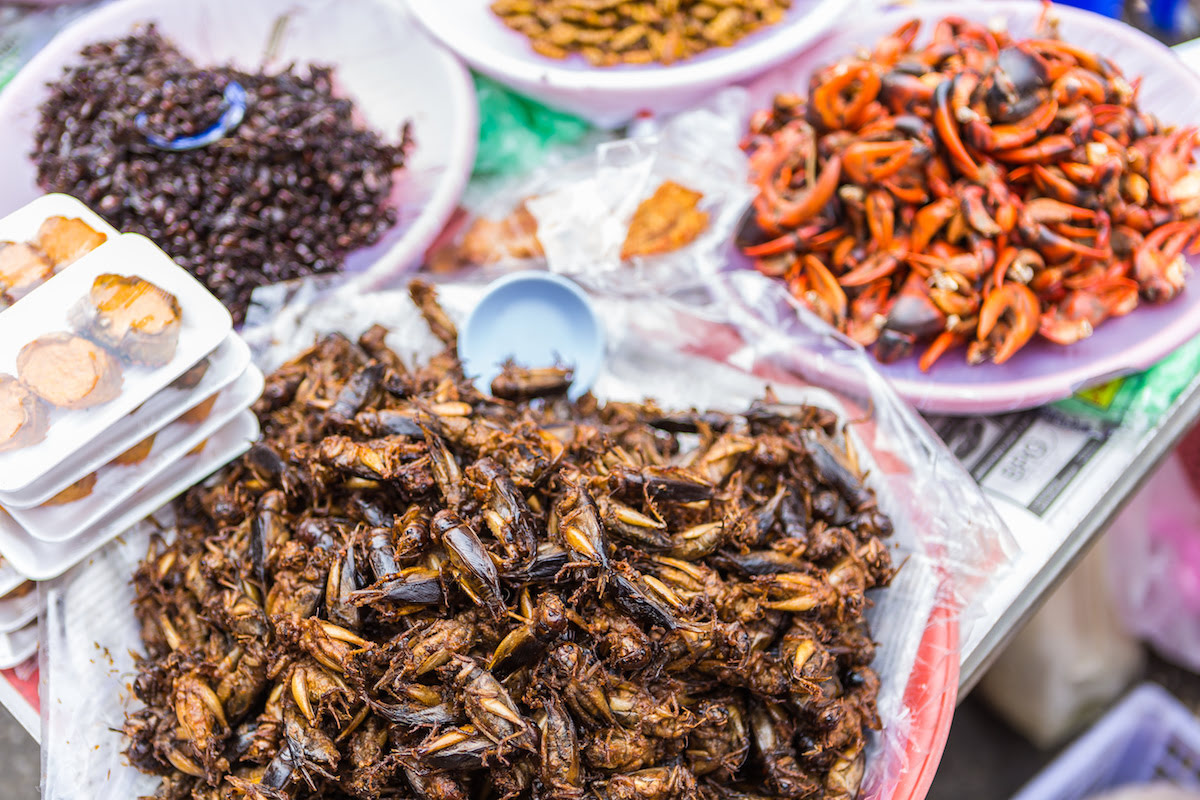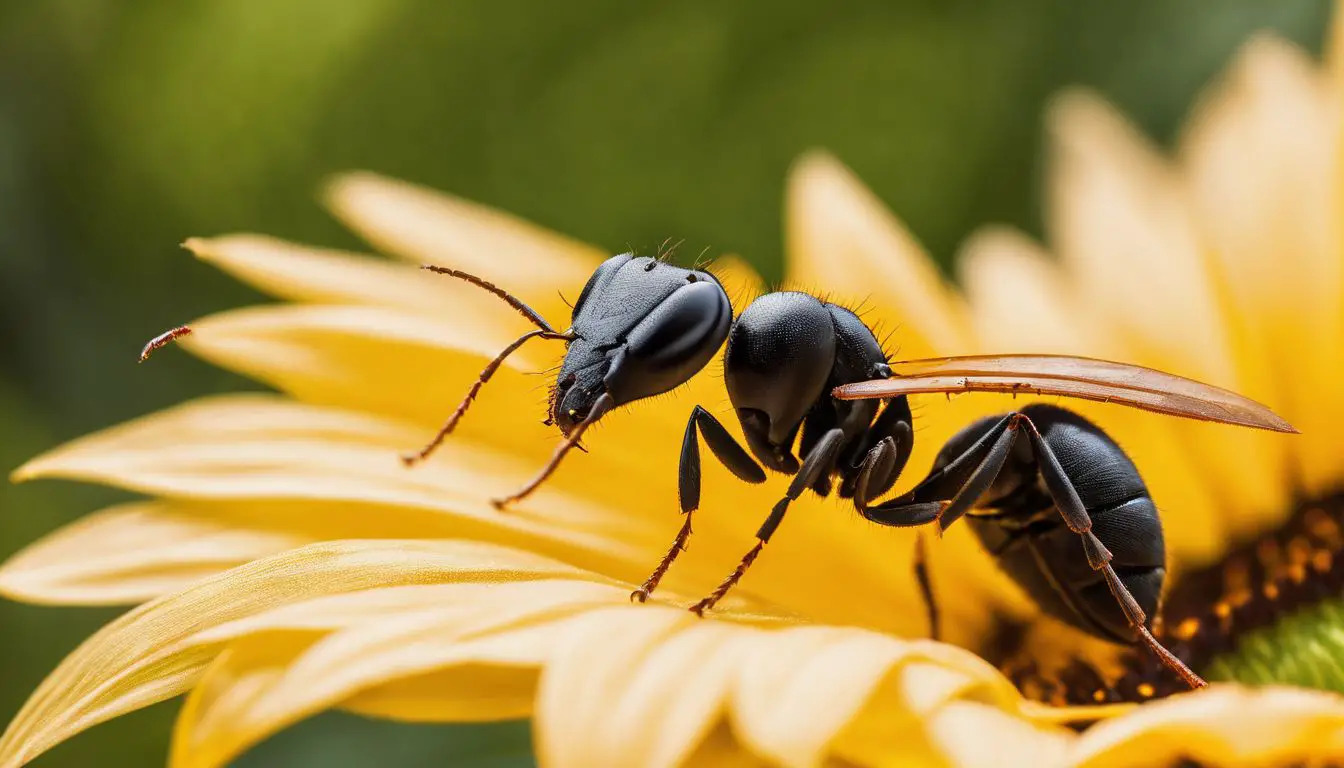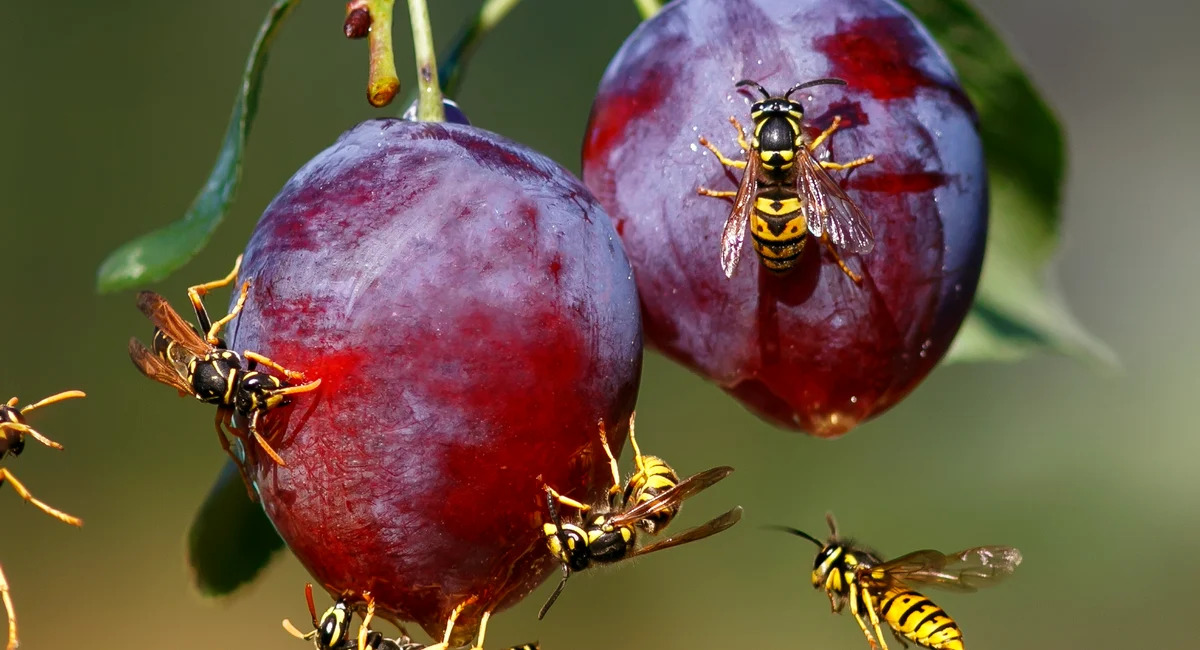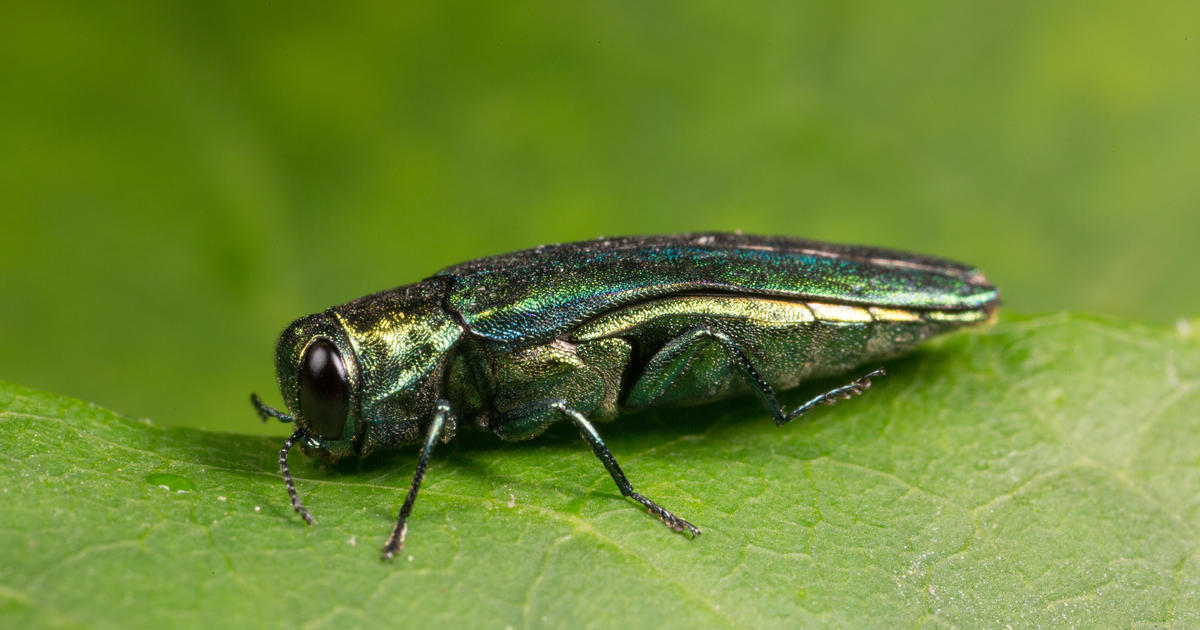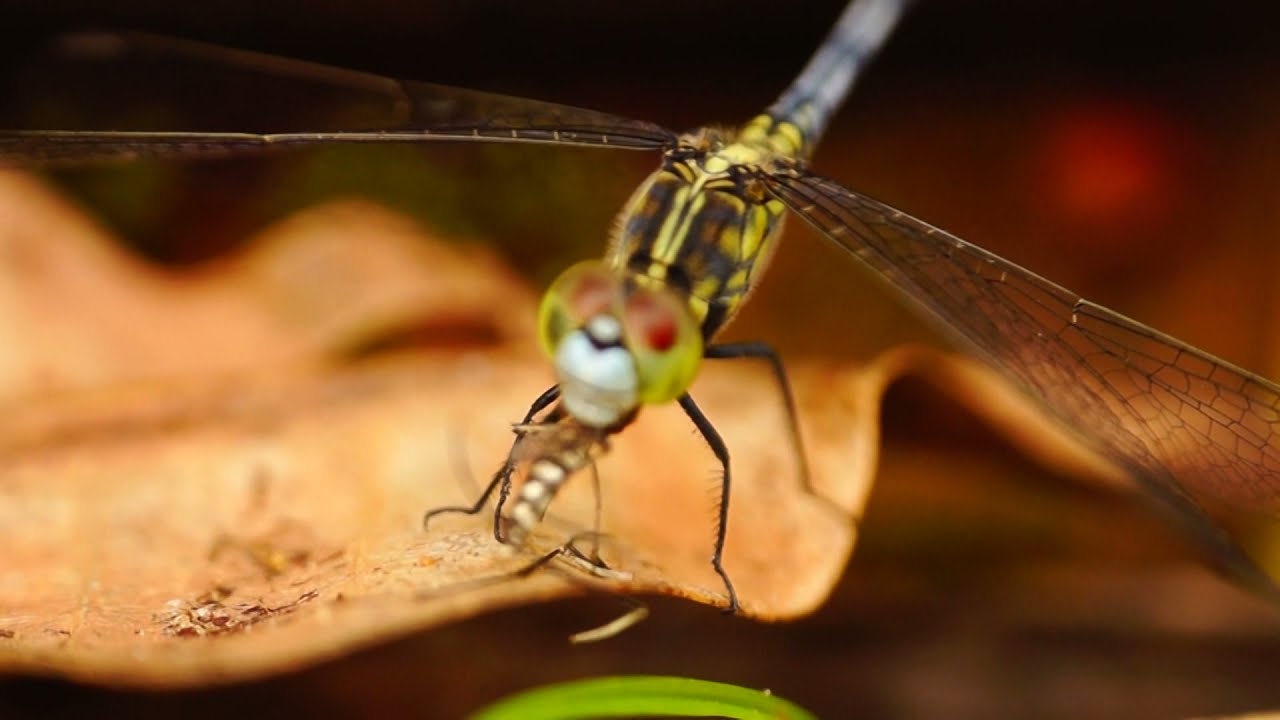Home>Gardening News and Trends>Latest News>What Insects Eat Butterflies
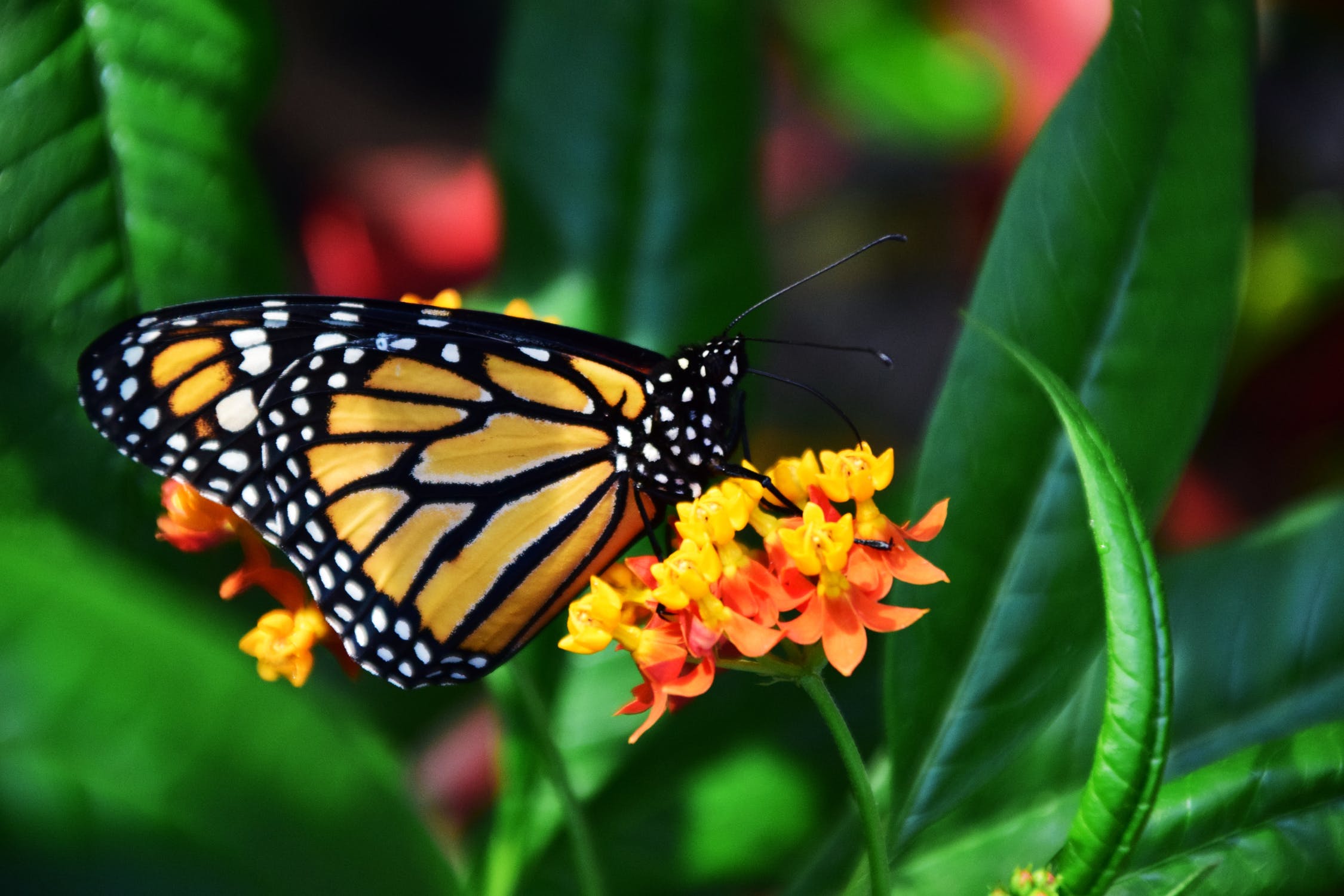

Latest News
What Insects Eat Butterflies
Modified: January 22, 2024
Stay up to date with the latest news on what insects eat butterflies. Stay informed with our informative articles and stay ahead in butterfly conservation efforts.
(Many of the links in this article redirect to a specific reviewed product. Your purchase of these products through affiliate links helps to generate commission for Chicagolandgardening.com, at no extra cost. Learn more)
Table of Contents
Introduction
Butterflies are some of the most beautiful creatures in nature, captivating us with their vibrant colors and graceful flight. However, did you know that there are insects out there that actually feed on butterflies? It may come as a surprise, but the world of insects is full of fascinating interactions, including predation and parasitism.
Understanding the diets of insects is crucial for gaining insights into the intricate web of life in our natural ecosystems. It helps us comprehend the complex relationships between species and their impact on the environment. In this article, we will delve into the world of insects that feed on butterflies, exploring the various types and their unique characteristics.
Before we proceed, it is important to note that insects that feed on butterflies are not necessarily “bad.” While the idea of delicate butterflies being preyed upon may seem disheartening, it is an integral part of the natural order. Insects, like any other organism, have their own role to play in the ecosystem, and their feeding habits contribute to the overall balance.
So, let’s embark on this intriguing journey to discover the insects that eat butterflies, unraveling their strategies, and gaining a deeper understanding of the complex dynamics of the natural world.
Importance of Understanding Insect Diets
Gaining knowledge about the diets of insects, including those that feed on butterflies, is crucial for several reasons. Let’s explore the importance of understanding insect diets:
- Ecosystem Dynamics: Studying insect diets helps us understand the intricate relationships and interactions within ecosystems. Insects play essential roles as pollinators, decomposers, and predators, shaping the balance of plant and animal populations. By examining what insects eat, we can better comprehend the ripple effects these interactions have on the environment.
- Conservation Efforts: A thorough understanding of insect diets can assist in conservation efforts, particularly when it comes to protecting butterfly populations. By identifying the insects that prey on butterflies, researchers can develop strategies to mitigate their impact and preserve endangered species. This knowledge allows for targeted conservation measures, such as creating specific habitats or implementing predator control methods.
- Ecological Restoration: When restoring damaged or degraded ecosystems, knowing the diets of insects is essential. By reintroducing the plants that certain insects rely on as food sources, we can aid in the recovery of both the insect populations and the overall ecosystem. Understanding the complex web of interactions between insects, plants, and other organisms is key to successful restoration efforts.
- Natural Pest Control: Some insects that feed on butterflies also prey on agricultural pests. By studying their diets, we can identify natural predators that can be utilized for pest control purposes. This knowledge enables farmers and gardeners to implement sustainable and eco-friendly pest management methods, reducing the reliance on harmful chemicals.
- Education and Awareness: Understanding insect diets provides valuable educational opportunities. By teaching people about the role of insects in the ecosystem, we can foster a deeper appreciation for the natural world and encourage sustainable practices. It also highlights the interconnectedness of species and the importance of biodiversity conservation.
As you can see, understanding the diets of insects, including those that feed on butterflies, has far-reaching implications for ecology, conservation, and sustainable practices. By unraveling the mysteries of insect predation and parasitism, we gain insights into the intricate workings of nature and can make informed decisions to protect and preserve our environment.
Herbivorous Insects
Herbivorous insects are those that feed exclusively or primarily on plant material, including leaves, flowers, stems, and roots. While butterflies are known for their nectar-feeding habits, there are herbivorous insects that take advantage of their food sources as well. Let’s explore a few examples:
- Caterpillars: Perhaps the most well-known herbivorous insects are butterfly larvae, commonly known as caterpillars. These voracious eaters have specialized mouthparts, called mandibles, designed for chewing plant matter. Caterpillars consume leaves from specific host plants, which vary depending on the butterfly species. Some caterpillars have evolved to feed on toxic or unpalatable plants, utilizing chemical defenses to fend off predators.
- Leaf Beetles: Leaf beetles, also known as chrysomelids, are a diverse group of herbivorous insects that includes many species that feed on plant foliage. They typically have strong mandibles and feed on leaves, causing characteristic patterns of holes or skeletonization. Some leaf beetles, like the Colorado potato beetle, are well-known agricultural pests that can cause significant damage to crops.
- Grasshoppers: Although primarily known for their ability to consume grasses and other vegetation, some grasshopper species also feed on butterfly host plants. Grasshoppers have chewing mouthparts and are capable of consuming large quantities of plant material. During periods of population outbreaks, they can cause substantial damage to agricultural crops and natural vegetation.
- Sawflies: Sawflies are members of the hymenopteran order, closely related to bees, wasps, and ants. While most sawflies are herbivorous and feed on plants, some species have larvae that specialize in feeding on butterfly host plants. Sawfly larvae resemble caterpillars but can be distinguished by their unique prolegs and the presence of tiny saw-like appendages on their abdomen.
- Plant Bugs: Plant bugs, or mirids, are a diverse group of insects that includes many herbivorous species. They have piercing-sucking mouthparts and feed on plant sap. While they may not directly feed on butterfly larvae or adults, their presence can indirectly affect butterfly populations by reducing the availability of host plants or causing damage to plant reproductive structures.
Herbivorous insects play important roles in plant ecology, acting as pollinators, seed dispersers, and nutrient recyclers. While some herbivorous insects can be considered pests when they cause damage to cultivated plants, it is essential to recognize their ecological significance and the delicate balance they contribute to in natural ecosystems.
Predatory Insects
Predatory insects are a fascinating group that feeds on other insects, including butterflies. They are equipped with specialized adaptations for hunting and capturing prey. Let’s explore a few examples of predatory insects that target butterflies:
- Mantises: Praying mantises are known for their distinctive appearance and their ability to capture prey with their front legs, resembling a praying position. While they typically feed on a variety of insects, including flies and grasshoppers, larger mantis species have been observed capturing and consuming butterflies. Mantises are ambush predators, relying on their excellent camouflage to blend in with their surroundings before striking their unsuspecting prey.
- Damselflies and Dragonflies: These fast-flying insects are formidable predators in the world of insects. Damselflies and dragonflies have strong jaws and sharp, tooth-like structures that allow them to catch and hold onto their prey. While they are primarily known for hunting and feeding on other flying insects, including mosquitoes and flies, they have also been observed hunting and consuming butterflies in their vicinity.
- Spiders: Although technically arachnids rather than insects, spiders are worth mentioning in the context of predatory insects that target butterflies. Many spider species, such as orb-weavers and crab spiders, build intricate webs or lie in wait to capture unsuspecting prey. Butterflies flying into spider webs or landing on flowers occupied by spiders may become meals for these skilled predators.
- Assassin Bugs: Assassin bugs, also known as predatory bugs, are an incredibly diverse group of insects known for their predatory behavior. They have a long, piercing mouthpart called a rostrum that they use to impale their prey and inject enzymes that dissolve the internal tissues. Some species of assassin bugs have been observed preying on butterflies, piercing their bodies with their rostrum and sucking out their body fluids.
- Robber Flies: Robber flies are agile and powerful aerial predators that capture their prey on the wing. With their excellent vision and strong legs, they chase down and capture various flying insects, including butterflies. Robber flies have a proboscis that injects saliva into their prey, immobilizing them and allowing easy consumption.
Predatory insects play crucial roles in regulating insect populations, including those of butterflies. While their feeding habits may seem ruthless, they are a natural part of the ecosystem and contribute to the balance of species. By controlling the populations of herbivorous insects, predatory insects help maintain the health and diversity of plant communities and contribute to the overall functioning of ecosystems.
Parasitic Insects
Parasitic insects are a fascinating group that relies on other organisms, including butterflies, for their survival and reproduction. They have evolved unique strategies to exploit their hosts, often causing harm or even death. Let’s explore a few examples of parasitic insects that target butterflies:
- Parasitic Wasps: There are many species of parasitic wasps that specifically target butterflies. These wasps lay their eggs on or inside butterfly larvae or pupae. Once the eggs hatch, the wasp larvae feed on the internal tissues of the host, often resulting in the death of the butterfly. Some parasitic wasps inject venom into their hosts to suppress their immune response and ensure the survival of their offspring.
- Tachinid Flies: Tachinid flies are another group of parasitic insects that target butterflies. The female tachinid fly lays her eggs on or near the caterpillar or adult butterfly. The fly larvae hatch and burrow into the host, feeding on its tissues. The presence of tachinid fly larvae inside the butterfly can significantly weaken and eventually lead to its demise.
- Predatory Bugs: Although predatory bugs were mentioned earlier as predators, some species within this group also exhibit parasitic behavior. For example, certain species of ambush bugs or assassin bugs are known to parasitize butterfly eggs. The female bug lays her eggs near or directly on the butterfly eggs, and the hatching nymphs feed on the developing butterfly embryos.
- Braconid Wasps: Braconid wasps are parasitic insects that attack butterfly larvae. They lay their eggs inside the body of the caterpillar, and the wasp larvae develop and feed on the internal tissues of the host. The caterpillar often continues to feed and grow while serving as a food source for the developing wasp larvae. Eventually, the wasp larvae emerge from the caterpillar as fully grown adult wasps.
- Ichneumon Wasps: Ichneumon wasps are a diverse group of parasitic insects that parasitize a wide range of host organisms, including butterflies. The female ichneumon wasp uses her long ovipositor to inject eggs into the butterfly larvae or pupae. The wasp larvae then develop inside the host, consuming its tissues until they are ready to pupate.
Parasitic insects have remarkable adaptations that allow them to exploit butterflies for their own survival and reproduction. While their feeding habits may be detrimental to butterfly populations, they are an important part of the ecosystem. Being aware of the presence and impact of parasitic insects on butterflies can provide valuable insights for ecological research and conservation efforts.
Insects That Feed on Butterfly Larvae
Butterfly larvae, commonly known as caterpillars, are vulnerable to a variety of insect predators. These predators have adapted to exploit the nutritious and relatively defenseless caterpillars as a food source. Let’s explore a few examples of insects that feed on butterfly larvae:
- Parasitic Wasps: As mentioned earlier, certain species of parasitic wasps lay their eggs on or inside butterfly larvae. The developing wasp larvae then feed on the internal tissues of the caterpillar, often leading to its demise. This unique form of parasitism is a common strategy among some wasp species.
- Tachinid Flies: Tachinid flies also target butterfly larvae as hosts for their developing larvae. The female tachinid fly lays her eggs on or near the caterpillar. Once the eggs hatch, the fly larvae burrow into the body of the caterpillar and feed on its tissues, eventually causing the death of the host.
- Ambush Bugs: Some species of ambush bugs (predatory bugs) are opportunistic predators that feed on a variety of insects, including butterfly larvae. These cunning bugs hide in foliage or flowers, waiting for unsuspecting caterpillars to come within striking distance. Once caught in the powerful grip of the ambush bug’s front legs, the caterpillar becomes a meal for this predator.
- Ants: Certain species of ants are known to be voracious predators of butterfly larvae. They are attracted to the sugary secretions produced by caterpillars and will actively seek them out. Once an ant colony finds a caterpillar, they may overwhelm it with sheer numbers and utilize their powerful jaws to dismantle and carry away the hapless prey.
- Birds: While not insects, birds are important predators of butterfly larvae. Many bird species have evolved to search for and feed on caterpillars, recognizing them as a valuable source of protein. Birds use their sharp beaks or tongues to extract the caterpillars from their leafy hiding places in order to satisfy their dietary needs.
These insects that feed on butterfly larvae have evolved various strategies to hunt and consume their prey. While it may seem challenging for caterpillars to evade these determined predators, they have their own adaptations, such as camouflage and warning coloration, to minimize the risk. The ongoing battle between predators and prey adds to the complexity and wonder of the natural world.
Insects That Feed on Adult Butterflies
While adult butterflies are graceful and beautiful creatures, they are not exempt from becoming prey for a range of insect predators. These predators have evolved strategies to capture and feed on adult butterflies, taking advantage of their flight patterns and behavioral traits. Let’s explore a few examples of insects that feed on adult butterflies:
- Dragonflies: Dragonflies are skilled and agile aerial predators that target a variety of flying insects, including adult butterflies. With their strong wings and powerful flight, dragonflies chase down butterflies in mid-air, capturing them with their spiky legs or the strong jaws at the front of their face. Once caught, the dragonfly consumes the butterfly’s body, leaving behind only the wings.
- Robber Flies: Robber flies are predatory insects that are known for their hunting prowess. These flies intercept and capture insects while they are in flight. Adult butterflies are a potential food source for robber flies, which seize them using their strong legs and inject enzymes to immobilize and digest their prey. They then consume the liquefied tissues of the captured butterfly.
- Spiders: While spiders are not insects, they are also opportunistic predators of adult butterflies. Spiders that build webs may catch unsuspecting butterflies that fly into their intricate traps. Other species of spiders, such as jumping spiders, actively hunt their prey, including butterflies, using their excellent eyesight and agility to get close before capturing them.
- Praying Mantises: Praying mantises, with their well-camouflaged bodies and powerful forelegs, are ambush predators that have been known to capture adult butterflies. They patiently wait on plants or other surfaces, blending in with their surroundings, and are capable of quickly striking and capturing butterflies that come within their reach.
- Wasps: Some species of wasps are known to prey upon adult butterflies. For example, spider wasps are solitary wasps that specialize in hunting spiders, but they may occasionally target butterflies as well. These wasps paralyze their prey with a venomous sting before carrying them away to be stored as a future food source for their developing young.
These insects that feed on adult butterflies have developed unique adaptations and hunting strategies to capture their flying prey. While it may seem challenging for butterflies to evade these determined predators, they also possess their own survival mechanisms, such as evasive flight patterns and clever use of wing coloration, to increase their chances of survival. The interplay between predators and butterflies adds to the intricate tapestry of life in the natural world.
Conclusion
The world of insects is full of fascinating interactions, including those between insects that prey upon butterflies and the delicate butterflies themselves. Understanding the diets of these insects provides us with valuable insights into the intricate web of life in our natural ecosystems.
From herbivorous insects that feed on butterfly larvae to predatory and parasitic insects that target adult butterflies, the range of insects involved in these interactions is diverse. Herbivorous insects, such as caterpillars and leaf beetles, rely on butterfly host plants for sustenance, while predatory insects like mantises and dragonflies actively hunt and capture butterflies as a source of food. Parasitic insects, including certain wasps and flies, exploit butterflies as hosts for their developing larvae.
Studying insect diets and their interactions with butterflies is crucial for numerous reasons. It helps us better understand the delicate balance of ecosystems, aids in conservation efforts by identifying threats to butterfly populations, facilitates ecological restoration by considering the needs of caterpillar host plants, and offers opportunities for natural pest control by utilizing predatory insects.
As we delve into the intricate relationships between insects and butterflies, it is important to recognize that each species has its role to play in the ecosystem. Insects that feed on butterflies are not necessarily “bad,” but rather an integral part of the natural order. By better understanding these interactions, we can appreciate the complexity of nature and make informed decisions to protect and preserve our environment.
So, the next time you observe a butterfly fluttering by, appreciate the hidden world of insects that may be lurking nearby, ready to feed on or exploit these mesmerizing creatures. It is a testament to the intricate balance and diversity of life in our natural world.

